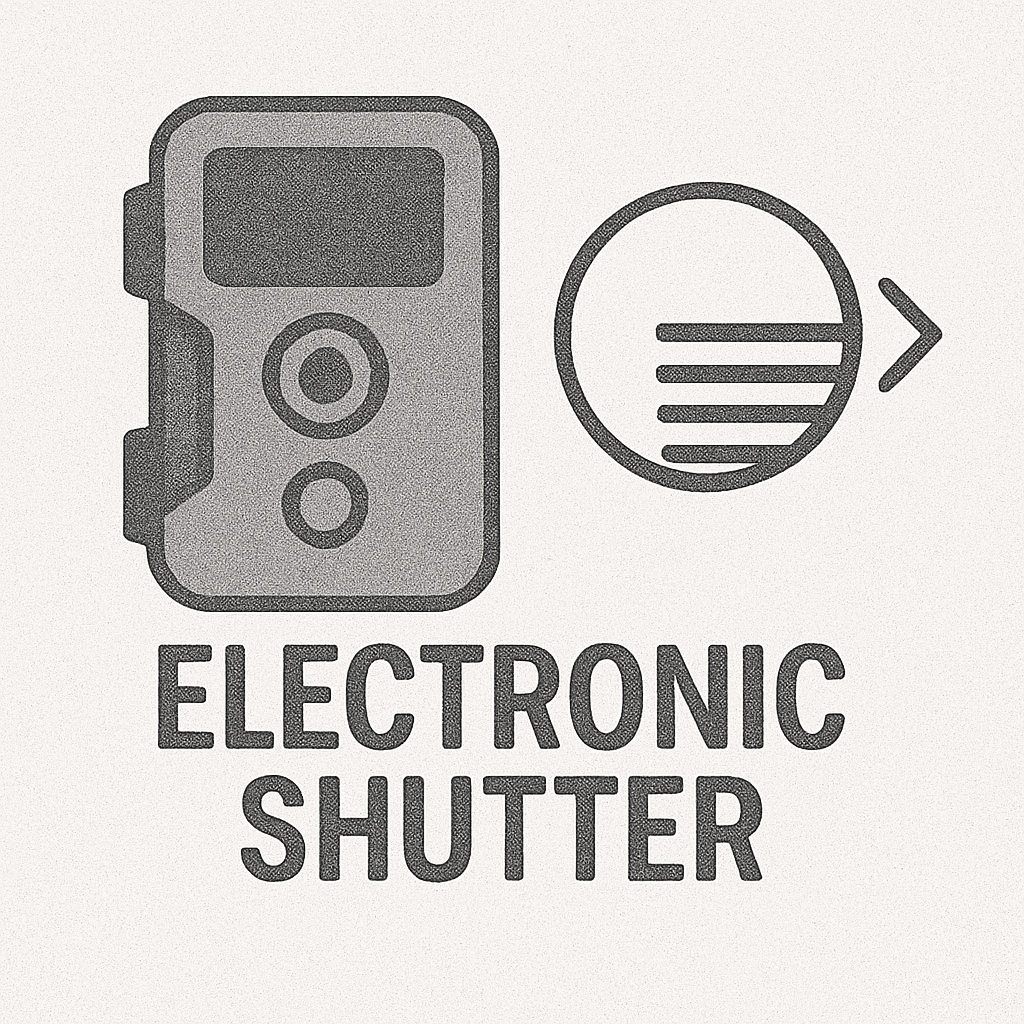
Electronic Shutter in Trail Cameras
Discover how electronic shutters work in trail cameras, their advantages, limitations, and how they differ from mechanical shutters.
Glossary
A camera shutter that operates electronically without mechanical movement or noise, ideal for discreet photography in sensitive environments.
A silent shutter, also known as an electronic shutter, is an advanced camera feature that eliminates mechanical movement and audible noise during image capture. Unlike traditional mechanical shutters that rely on a physical curtain to expose the sensor to light, a silent shutter electronically activates the sensor to read and record data. This mechanism offers a completely silent operation, which is highly beneficial for scenarios requiring discretion, such as wildlife photography, ceremonies, or professional events.
Silent shutters are predominantly found in mirrorless cameras and some high-end DSLR models with hybrid functionalities. Their noiseless operation ensures that the subject or the surrounding environment remains undisturbed, making them indispensable for photographers in sensitive situations.
The silent shutter operates by utilizing the camera’s sensor to electronically record light data. Here’s a detailed breakdown of its functioning:
This process is entirely electronic, meaning no physical movement occurs within the camera, thus ensuring silent operation. However, the sequential data readout leads to certain limitations, such as rolling shutter distortion.
Silent shutters offer numerous advantages that make them highly desirable for professional and amateur photographers alike:
While silent shutters have significant advantages, they are not without limitations:
The two primary types of electronic shutters are:
| Shutter Type | Function | Advantages | Limitations |
|---|---|---|---|
| Rolling Shutter | Sequentially reads sensor data. | Common and cost-effective. | Susceptible to distortion and banding. |
| Global Shutter | Exposes the entire sensor simultaneously. | Eliminates rolling shutter effects. | Expensive and less widely available. |
High-end cameras, such as the Sony A9, mitigate rolling shutter issues with advanced processors that expedite sensor readout.
Silent shutters are particularly advantageous in the following scenarios:
Advancements in sensor technology, particularly the development of affordable global shutters, are expected to resolve the limitations of silent shutters. Faster readout speeds and improved dynamic range will make electronic shutters more versatile and reliable.
The silent shutter represents a significant innovation in modern photography, offering noiseless operation, reduced mechanical wear, and faster shutter speeds. While it has limitations, such as rolling shutter distortion and banding, its benefits far outweigh the drawbacks for many photographers. As technology evolves, silent shutters are poised to become even more integral to both professional and recreational photography.
Explore cameras with advanced silent shutter technology to capture every moment discreetly and effectively.
A silent shutter is a camera mechanism that operates electronically without mechanical movement or noise, allowing for quiet and discreet photography.
A silent shutter provides complete silence, reduces mechanical wear, allows higher shutter speeds, and minimizes vibrations, making it ideal for wildlife, event, and macro photography.
Drawbacks include rolling shutter distortion, banding under artificial light, limited flash compatibility, and potential reductions in dynamic range and increased noise at high ISOs.
Unlike a mechanical shutter, which uses moving parts to expose the sensor, a silent shutter relies on electronic readout, making it noiseless and reducing mechanical wear.
The rolling shutter effect refers to image distortion caused by sequential line-by-line sensor readout, often visible with fast-moving subjects or rotating objects.

Discover how electronic shutters work in trail cameras, their advantages, limitations, and how they differ from mechanical shutters.
Understand the importance of fast shutter speed in wildlife and pet photography, how to use it effectively, and tips for capturing sharp, dynamic shots of moving animals.
Discover the meaning of shutter speed in photography, how it affects exposure and motion, and its importance in achieving creative and practical results.